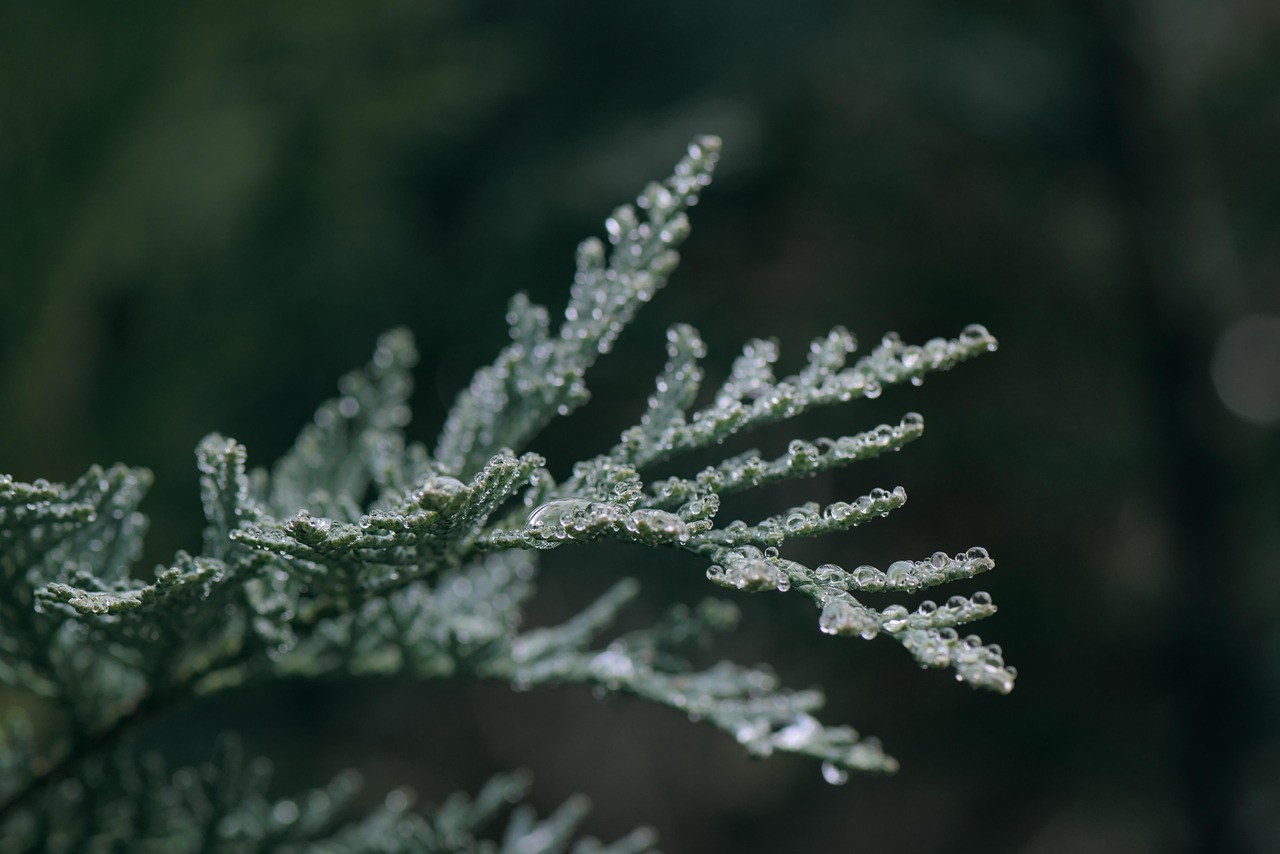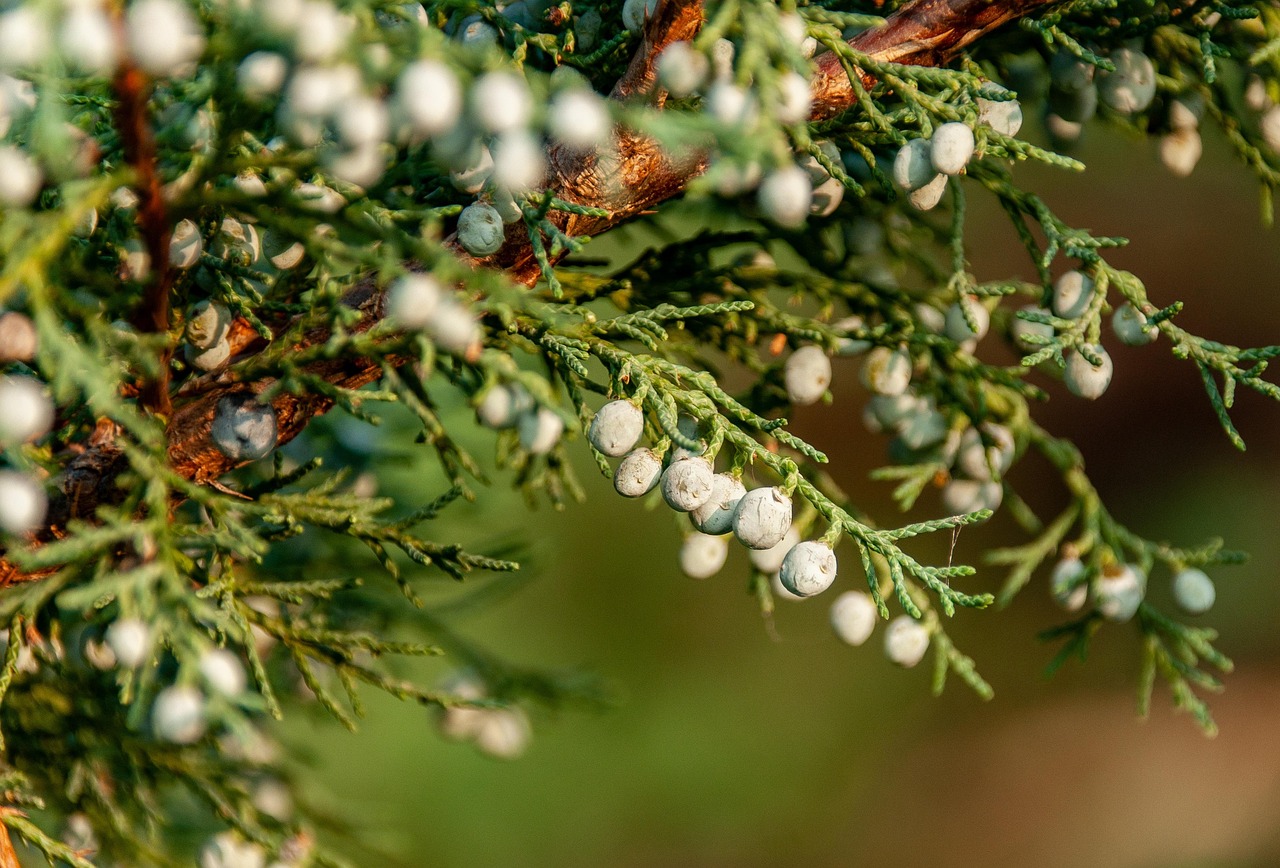Pruning juniper trees properly promotes dense growth and creates a neat ground cover. This process involves trimming back branches to encourage bushiness, maintain shape, and remove any dead or diseased areas.
Juniper trees are popular in landscaping due to their versatility and resilience. They can thrive in various soil types and climates, making them an ideal choice for ground cover. When pruned correctly, junipers can create a lush, inviting appearance that enhances the overall aesthetic of gardens and yards. Understanding how to prune these trees is essential for health and aesthetics.

Junipers belong to the Cypress family and come in many varieties, each with unique characteristics. Some grow tall and upright, while others spread low to the ground. Regardless of the type, proper pruning techniques will lead to denser foliage and a more uniform look.
| Juniper Varieties | Growth Habit | Recommended Pruning Time |
|---|---|---|
| Eastern Red Cedar | Upright | Late Winter to Early Spring |
| Common Juniper | Spreading | Late Winter to Early Spring |
| Blue Star Juniper | Dwarf, compact | Early Spring |
| Shaggy Juniper | Low growing | Late Winter to Early Spring |
Understanding Juniper Growth Patterns
To effectively prune junipers, it is crucial to understand their growth patterns. Junipers grow by adding new foliage at their tips. As they mature, they may also develop dead branches or thinning areas. Recognizing these patterns will help in determining the best approach for pruning.
Junipers tend to grow in a conical or spreading shape. Their foliage consists of needle-like or scale-like leaves, depending on the species. The growth rate can vary significantly among different varieties. For instance, some junipers are slow-growing and may require less frequent pruning, while others can quickly become unruly without regular maintenance.

Benefits of Pruning Junipers
Pruning junipers offers several benefits that contribute to their health and appearance. Regular pruning helps:
- Promote denser foliage, leading to a fuller look.
- Encourage healthy growth by removing dead or diseased wood.
- Maintain an attractive shape that complements landscaping.
- Improve air circulation within the plant, reducing the risk of pests and diseases.
- Control the size of the bush or tree, keeping it within desired boundaries.
Each of these benefits plays a vital role in ensuring that junipers remain healthy and visually appealing. A well-maintained juniper can serve as an excellent ground cover, providing both beauty and function in garden designs.
When to Prune Junipers
Timing is a critical factor in the successful pruning of juniper trees. The best time to prune differs based on the specific variety of juniper. Generally, late winter to early spring is ideal for most types. This timing allows the plant to recover quickly before the growing season begins.

Pruning during dormancy minimizes stress on the plant. It also allows for easier visibility of which branches require trimming. Avoid pruning in late fall or early winter, as this may encourage new growth that could be damaged by cold temperatures.
Tools Needed for Pruning
Having the right tools can make pruning more efficient and effective. Essential tools for pruning junipers include:
- Hand Pruners: Ideal for small branches and precise cuts.
- Loppers: Useful for thicker branches that are difficult to cut with hand pruners.
- Hedge Shears: Great for shaping and maintaining uniformity in shrubs.
- Saw: Needed for larger branches that cannot be trimmed with other tools.
- Gloves: To protect hands from sharp needles and rough branches.
Using sharp and clean tools will ensure smooth cuts. This is essential for promoting healing and preventing diseases from entering the plant.

In summary, understanding the growth patterns of juniper trees is crucial for effective pruning. By knowing when to prune, what tools to use, and the benefits of maintaining healthy junipers, gardeners can create a beautiful and dense ground cover that enhances their outdoor spaces.
Techniques for Pruning Juniper Trees
Pruning juniper trees requires specific techniques to achieve the desired dense and neat ground cover. Proper pruning not only shapes the plant but also encourages healthy growth. Different methods can be applied depending on the overall goal, whether it’s maintaining size, improving health, or enhancing appearance.
Thinning
Thinning involves selectively removing branches to improve air circulation and light penetration. This technique is particularly useful for older junipers that may have become dense over time. Thinning helps prevent disease and encourages new growth.
- Identify crowded areas where branches overlap.
- Choose branches to remove, focusing on those that are weak or damaged.
- Make cuts at the base of the branch to minimize impact on the surrounding foliage.
Regular thinning can rejuvenate older junipers and help maintain a tidy appearance. This method also allows sunlight to reach the inner parts of the plant, promoting denser growth throughout.
Heading
Heading involves cutting back the tips of branches to create a more compact shape. This technique is effective for maintaining a specific height or width. It encourages lateral branching, which results in a bushier appearance.
- Decide how much to trim based on the desired size.
- Cut just above a node or leaf to encourage new growth.
- Avoid cutting too much at once to prevent shock.
Heading works well for junipers used as ground cover, as it helps to create an even and lush surface. This technique is best applied during the active growing season to ensure quick recovery.
Common Mistakes to Avoid
While pruning junipers can greatly enhance their appearance, certain mistakes can lead to damage or poor growth. Awareness of these common pitfalls will help gardeners achieve better results.
- Over-Pruning: Removing too much foliage can stress the plant, leading to slow recovery and potential dieback.
- Improper Timing: Pruning too late in the season can result in new growth that is susceptible to cold damage.
- Lack of Clean Tools: Using dirty or dull tools can introduce diseases and create jagged cuts that may not heal properly.
- Ignoring Plant Shape: Not considering the natural growth habit of the juniper can result in an unnatural appearance.
By avoiding these mistakes, gardeners can ensure that their junipers remain healthy and visually appealing after pruning.
Post-Pruning Care
After pruning, providing proper care helps junipers recover quickly and maintain their health. Here are essential post-pruning care tips:
- Watering: Ensure that the plant receives adequate water after pruning. This supports new growth and helps reduce stress.
- Fertilizing: Applying a balanced fertilizer can promote healthy regrowth. Use fertilizers designed for evergreen plants for best results.
- Mulching: Adding mulch around the base of the plant retains moisture and suppresses weeds. Ensure mulch is not piled against the trunk to avoid rot.
- Pest Monitoring: Keep an eye out for pests and diseases that may take advantage of the plant’s stress post-pruning. Early detection is key to management.
Caring for junipers after pruning is crucial to their recovery and long-term health. Following these practices will help maintain a dense ground cover and encourage vibrant growth.
Seasonal Considerations
The changing seasons can affect how and when you prune your juniper trees. Understanding these seasonal considerations will help you plan your maintenance effectively.
Spring: Spring is generally the best time for most pruning tasks. As new growth begins, it’s easier to see which branches need attention. However, avoid pruning during late spring if new growth has already started, as this may lead to damage.
Summer: Light pruning can be done in summer to shape the plant. Focus on removing dead or damaged branches. Avoid heavy pruning during this time as it can stress the plant under hot conditions.
Fall: Avoid heavy pruning in fall as this may promote new growth that won’t have time to harden off before winter. If necessary, only remove dead or diseased limbs.
winter: Late winter is suitable for major pruning tasks. At this time, junipers are dormant, which minimizes stress. Ensure that any cuts are made before new growth begins in spring.
By considering seasonal factors, gardeners can optimize their pruning efforts and ensure that their junipers thrive throughout the year.
Common Pests and Diseases Affecting Junipers
Understanding common pests and diseases that affect juniper trees is essential for maintaining their health and appearance. These issues can be exacerbated by improper pruning or care, leading to unsightly and unhealthy plants.
Pests
Junipers can attract various pests that may cause damage if not managed properly. The most common pests include:
- Spider Mites: These tiny pests suck the sap from the leaves, leading to discoloration and webbing on the plant.
- Scale Insects: Scale insects can appear as small bumps on branches and leaves. They feed on plant sap and can weaken the juniper significantly.
- Juniper Webworm: This caterpillar forms webs on the foliage and can cause substantial damage by eating the leaves.
- Aphids: Aphids are small, soft-bodied insects that cluster on new growth. They can transmit diseases and weaken the plant.
Regular inspections of junipers can help identify these pests early. Using horticultural soaps or insecticidal sprays can control infestations effectively.
Diseases
In addition to pests, junipers can be susceptible to several diseases. Some notable ones include:
- Canker Diseases: These diseases affect the bark, leading to dieback and branch death. They are often caused by fungi and can spread quickly.
- Phomopsis Blight: This fungal disease leads to browning and dieback of foliage, especially in young plants. It thrives in wet conditions.
- Root Rot: Caused by overwatering or poor drainage, root rot can lead to wilting and decline. Symptoms include yellowing foliage and stunted growth.
- Needle Blight: This disease causes needles to yellow and drop prematurely. It is often linked to high humidity and poor air circulation.
Maintaining good cultural practices, such as proper pruning, is essential to prevent many of these diseases. Ensuring good air circulation and avoiding overhead watering can significantly reduce the risk of disease development.
Soil and Nutritional Needs for Junipers
The health of juniper trees is closely tied to the quality of the soil in which they grow. Understanding their soil preferences and nutritional needs will help ensure robust growth.
Soil Requirements
Junipers thrive in well-drained soil with a slightly acidic to neutral pH. Here are some key points regarding their soil requirements:
- Drainage: Junipers do not tolerate waterlogged conditions. Ensure that the soil has good drainage to promote healthy root systems.
- Soil Type: Sandy or loamy soils are ideal for juniper growth. These soil types provide aeration and allow roots to expand easily.
- pH Levels: A pH range of 6.0 to 7.0 is optimal for junipers. Conduct a soil test to determine pH levels and amend as necessary.
Nutritional Needs
Junipers benefit from a balanced fertilization program, especially during the growing season. Here are some insights into their nutritional needs:
- Fertilizers: Use a slow-release, balanced fertilizer formulated for evergreen plants. This ensures a steady supply of nutrients over time.
- Nitrogen: Nitrogen is vital for new growth. Ensure the fertilizer contains adequate nitrogen levels to support lush foliage.
- Micronutrients: Elements such as iron, manganese, and zinc are essential for optimal health. Look for fertilizers that include these micronutrients.
Applying fertilizer at the beginning of spring allows junipers to take full advantage of nutrients as they enter the growing season. Avoid over-fertilization, as this can lead to excessive growth and increased susceptibility to pests and diseases.
Creating a Maintenance Schedule
A well-organized maintenance schedule is crucial for keeping junipers healthy and attractive. By planning regular care tasks, gardeners can ensure their junipers receive the attention they need throughout the year.
Monthly Care Tasks
A monthly maintenance schedule may include the following tasks:
- January – February: Inspect for winter damage and plan pruning activities.
- March: Begin pruning as needed before new growth starts; apply slow-release fertilizer.
- April: Monitor for pests; begin watering if rainfall is insufficient.
- May: Continue watering; check for signs of disease as temperatures rise.
- June – July: Lightly prune any overgrown areas; ensure adequate moisture during hot months.
- August: Monitor for pests; prepare for fall maintenance tasks.
- September – October: Prune again if necessary; apply mulch around the base for winter protection.
- November – December: Winterize by checking for any damage; avoid heavy pruning during this time.
This schedule provides a framework to keep junipers healthy while allowing for adjustments based on specific needs or local conditions. Consistent care ensures these plants remain vibrant and lush ground cover throughout their lifespan.
Enhancing Juniper Aesthetics Through Pruning
Beyond maintaining health, pruning junipers significantly enhances their aesthetic appeal. A well-pruned juniper can serve as a focal point in any garden or landscape design. The art of shaping these trees can create visually striking forms that complement surrounding plants and structures.
When planning the aesthetic aspects of juniper pruning, consider the following factors:
- Shape and Size: Choose a shape that fits the overall design of your garden. Whether you prefer a natural look or more geometric shapes, consistent pruning helps achieve your goals.
- Layering: Layering different heights and densities of junipers can create depth in your landscape. Prune taller varieties to maintain a balanced appearance with shorter ground cover types.
- Color Contrast: Use various juniper varieties with differing colors to create contrast. Pruning can enhance these colors, making them more vibrant and appealing.
- Seasonal Interest: Consider how the junipers will look throughout the seasons. Pruning can help maintain their form and ensure they continue to look attractive year-round.
Incorporating these design elements into your pruning routine can elevate the overall beauty of your outdoor space, making junipers not just functional ground cover but also stunning ornamental plants.
Environmental Considerations
An important aspect of caring for junipers involves understanding their impact on the environment. As evergreen plants, junipers play a vital role in providing habitat for wildlife and improving air quality. Here are some environmental benefits:
- Habitat Provision: Junipers offer shelter and food for various birds and small mammals. They provide nesting sites and berries for feeding.
- Soil Erosion Control: The dense root systems of junipers help prevent soil erosion on slopes and hillsides, making them valuable in landscaping designs that address erosion issues.
- Air Quality Improvement: Like all plants, junipers absorb carbon dioxide and release oxygen. Having them in your landscape contributes positively to air quality.
- Water Conservation: Junipers are drought-tolerant once established, requiring less water than many other plants. This quality makes them suitable for xeriscaping and environmentally-friendly gardening.
By integrating junipers into your landscape responsibly, you contribute to a healthier environment while enjoying their aesthetic benefits.
Preparing for Unexpected Challenges
Even with the best practices in place, gardeners may encounter unexpected challenges when growing junipers. Awareness of potential challenges can prepare you to respond effectively.
- Weather Extremes: Junipers can be susceptible to extreme weather conditions, such as heavy snow or high winds. Protecting your plants during harsh weather can minimize damage.
- Pest Outbreaks: Sudden pest infestations may occur despite regular monitoring. Early intervention is critical, so always have pest control strategies ready.
- Disease Monitoring: Keep an eye out for any signs of disease, especially after pruning. Any breaks in the bark or wilting foliage should prompt immediate investigation.
Being proactive about these challenges will help ensure your junipers remain healthy and visually appealing throughout their life cycle.
Conclusion
Pruning juniper trees is a vital practice for maintaining dense and neat ground cover. By understanding growth patterns, seasonal needs, pest management, and soil requirements, gardeners can cultivate vibrant junipers that enhance any landscape. The right pruning techniques lead to healthier plants while also promoting aesthetic appeal.
The environmental benefits offered by junipers further emphasize the importance of integrating these hardy plants into various landscape designs. From providing habitat for wildlife to improving air quality, junipers serve multiple roles in enhancing our outdoor spaces.
Ultimately, successful juniper tree pruning combines knowledge, technique, and ongoing care to create stunning ground cover that thrives year after year. By following the guidelines outlined in this article and adapting them to specific conditions, gardeners can achieve a beautiful and sustainable landscape filled with healthy juniper trees.
